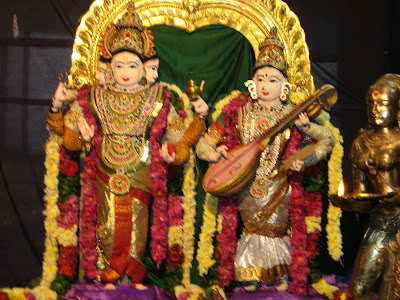The year was 1290 . A crowd had gathered around a clearing, where broken down pillars marked the presence of an ancient temple, now long gone. A young boy, just 14 years old, leaned against one of those pillars, deep in thought. Then, he began speaking, and the crowd fell silent, listening to his every word. He spoke without any notes, translating the Bhagavat Gita, from Sanskrit, which only the pundits knew, to the language everyone in the village knew and spoke – a variety of Prakrit which developed into the Marathi language. Even as he spoke, one of the men in the audience realized how momentous this event was, and how important this composition would be. He began writing down the words the young boy spoke, and this composition was named by its author and composer, the Bhavartha Deepika – the enlightening meaning (of the Bhagavat Gita). Now, the ancient, holy text, was no longer restricted to the pundits, but accessible to all, understood easily by them, composed as it was, in their...
Navami – the ninth day of Navaratri is dedicated to Saraswati, the goddess of learning. At home, we place books and writing implements near the altar of the God, and place an image of Saraswati over it. We do not read or write the whole day, taking the books out and reading them only on the next day, Dusshera, when it is auspicious to begin studies. We pray not only to the goddess of learning, but also to those things which aid us in learning. In the south, students welcome this day, as it gives them a respite from studies, but for us, it has never been so. I remember, we not only had school, but also exams during this period, and had no choice but to study on this day too. My mother used to make me keep textbooks of those subjects whose exams I had already completed, and had to use the other books to study. Not once did I get a break from studies as my cousins in Chennai did. Today, Samhith has no exams, so thank God; we can keep his books for the puja, but just for a couple more years. Then he too will experience the same things that I did.
Navami is also the last day for the decoration at the temple, and predictably, it was of BRAHMA and SARASWATI.
Meanwhile, where ever I went, I could see preparations for seeing off the Devi underway. Here is a photo I clicked of a vehicle being decorated to carry the goddess on her journey to her home, via the sea. It looked beautiful even as they were decorating it. It will look fantastic in the night with all the lights on…..
The festival dedicated to the goddess comes to an end with Dusshera –the tenth day. The images of the Devi all over India will be immersed in the water, Kolus will be dismantled, and this series of blogs on Navaratri will also come to an end. We have much planned for Dusshera, but to read about it, you will have to wait one more day. Goodbye until then………
Navami is also the last day for the decoration at the temple, and predictably, it was of BRAHMA and SARASWATI.
 |
| From Miscellaneous |
 |
| From Miscellaneous |
Meanwhile, where ever I went, I could see preparations for seeing off the Devi underway. Here is a photo I clicked of a vehicle being decorated to carry the goddess on her journey to her home, via the sea. It looked beautiful even as they were decorating it. It will look fantastic in the night with all the lights on…..
 |
| From Miscellaneous |
The festival dedicated to the goddess comes to an end with Dusshera –the tenth day. The images of the Devi all over India will be immersed in the water, Kolus will be dismantled, and this series of blogs on Navaratri will also come to an end. We have much planned for Dusshera, but to read about it, you will have to wait one more day. Goodbye until then………
Comments
Post a Comment
Thanks so much for stopping by. Please leave a comment for me so that I will know you have been here....